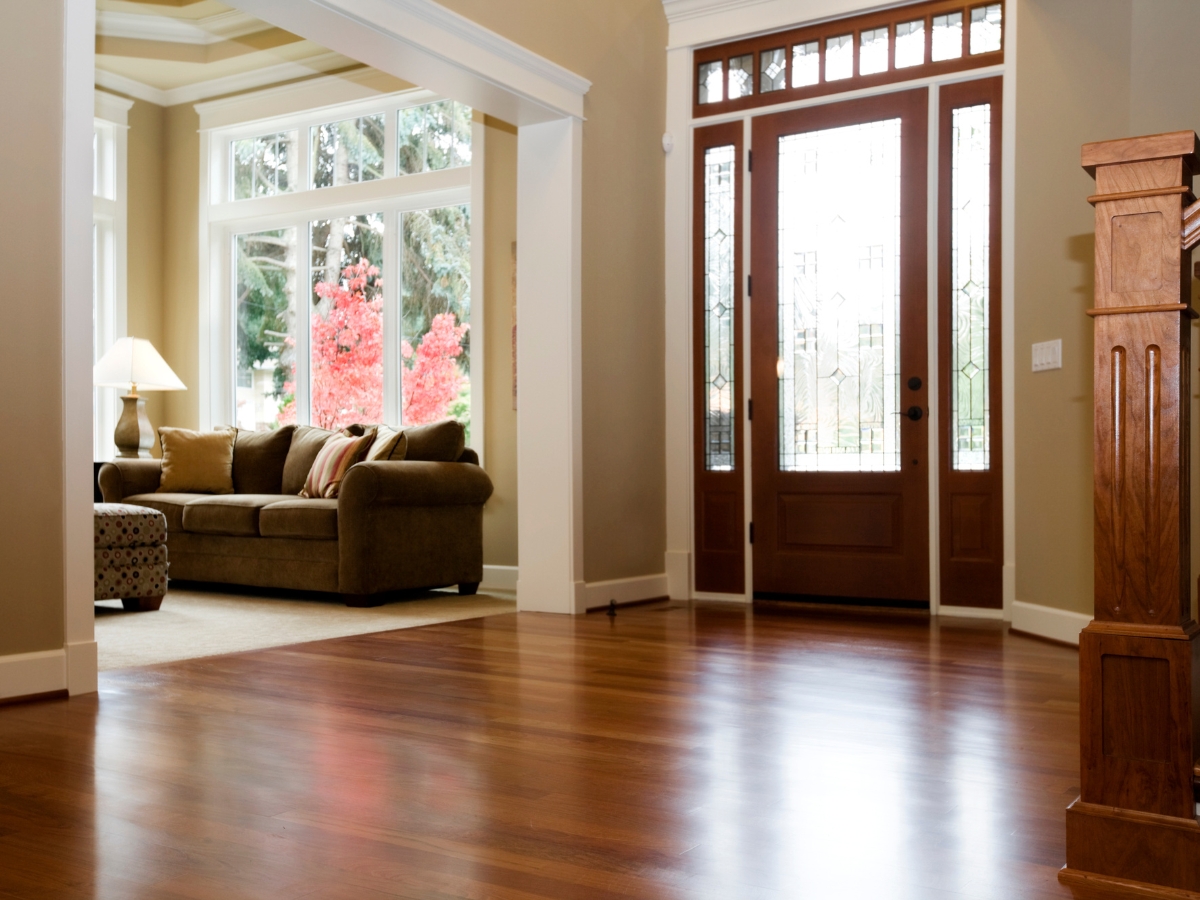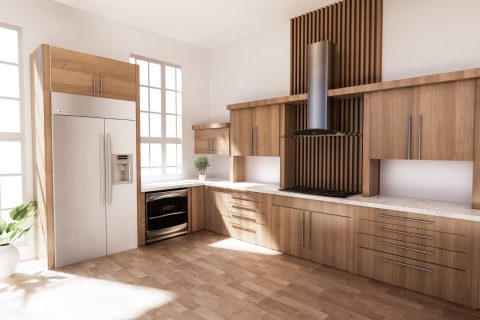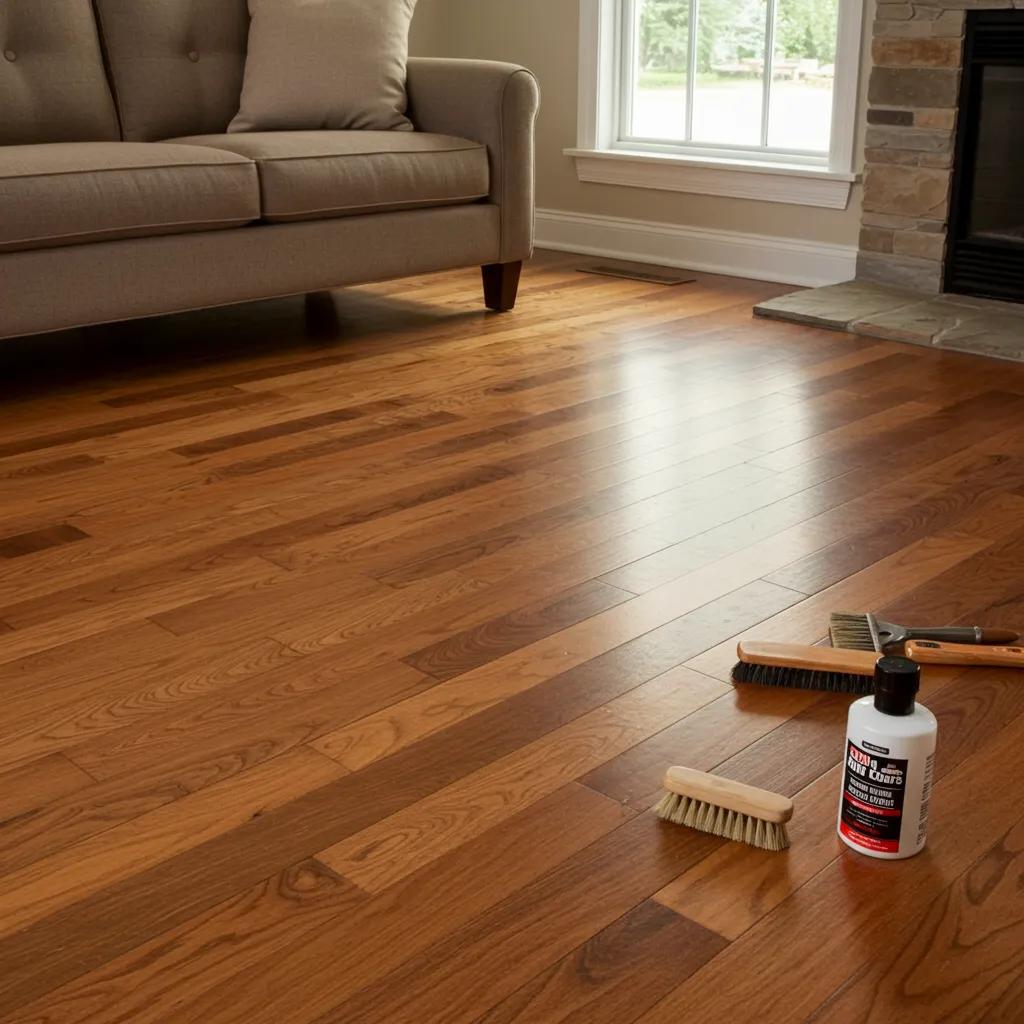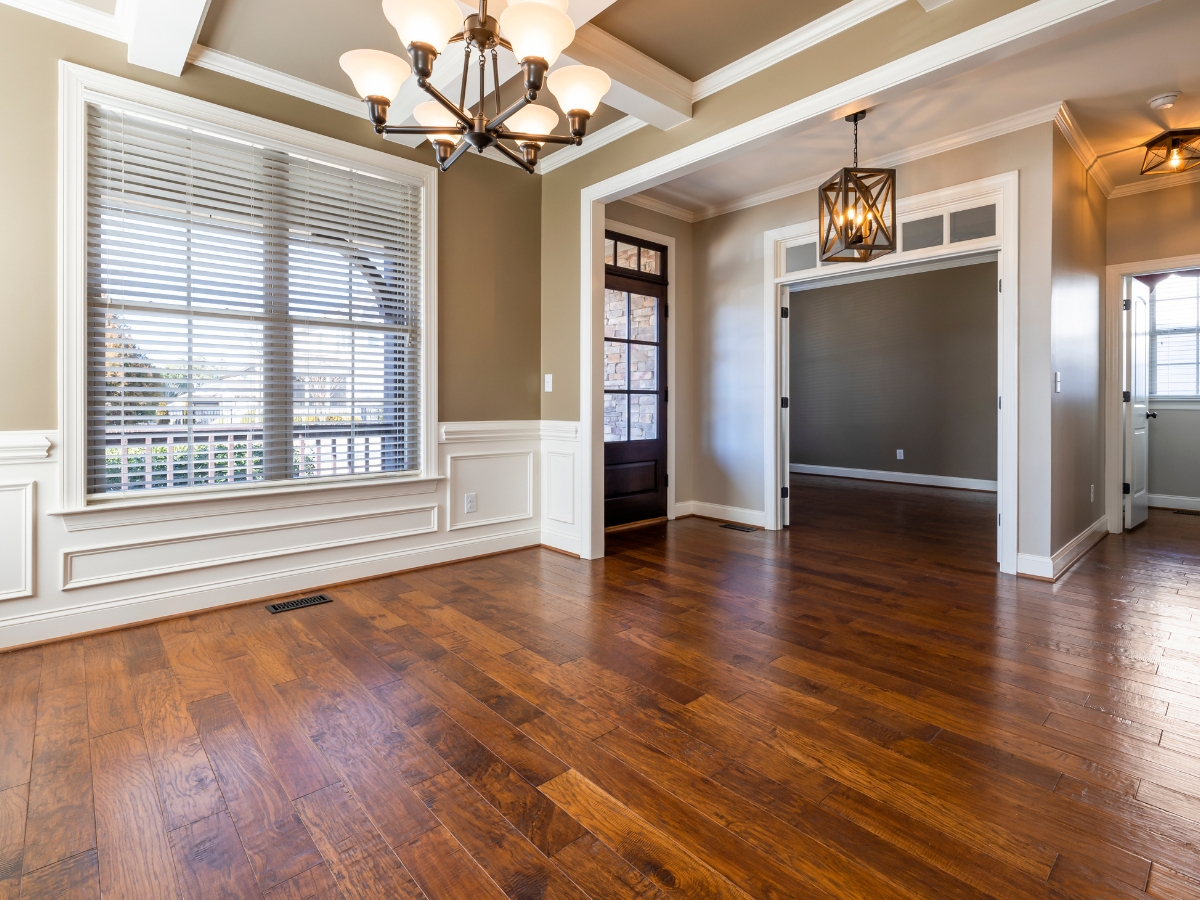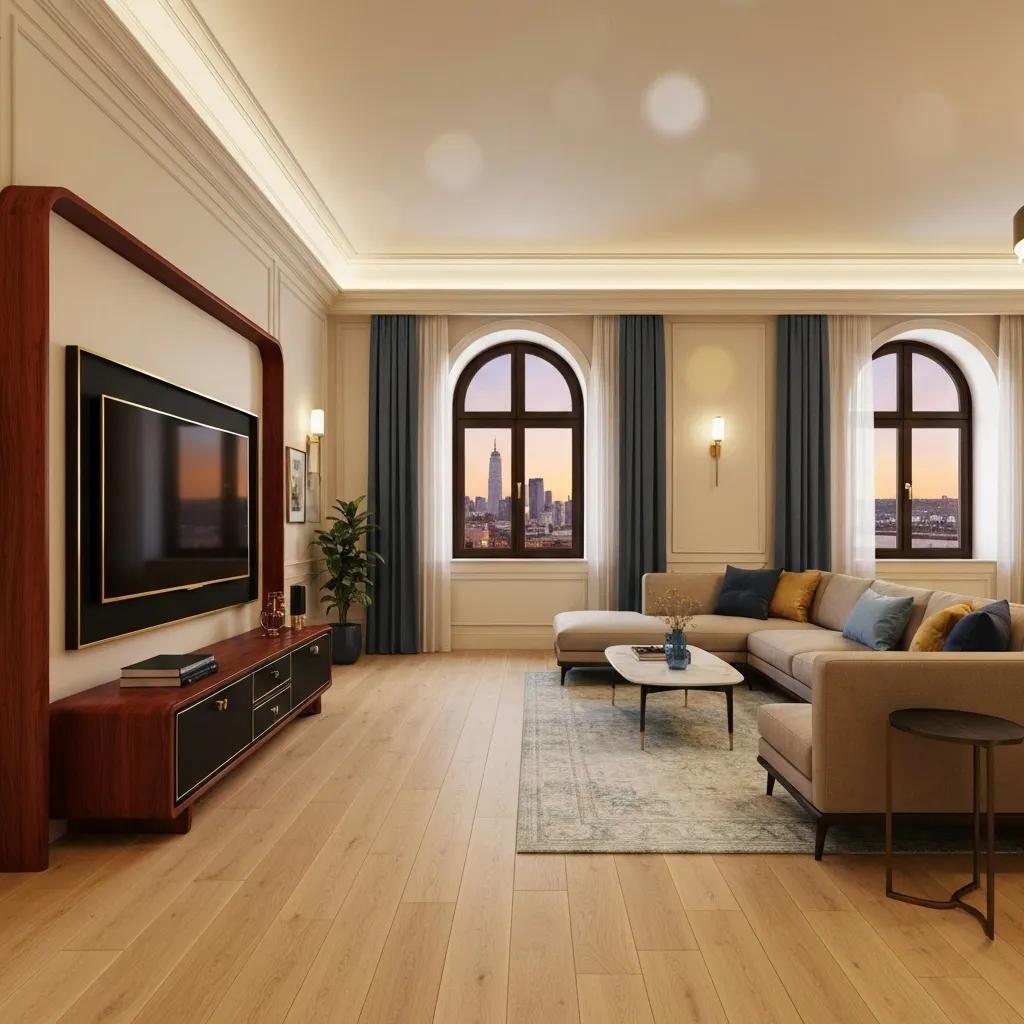When choosing the perfect hardwood flooring for your Dallas home, the decision often comes down to engineered hardwood versus solid hardwood. Both options offer unique benefits, but factors like Dallas’s humid climate, temperature fluctuations, and subfloor requirements can influence which is the better choice. Engineered hardwood provides greater moisture resistance and versatility for installation, while solid hardwood offers unmatched durability and the ability to be refinished multiple times. In this guide, we’ll compare the pros, cons, and long-term performance of each to help you determine the best flooring solution for your home.
Dallas Home Trends: Is Engineered Hardwood or Solid Hardwood Winning?
What Are Engineered Hardwood and Solid Hardwood Floors?
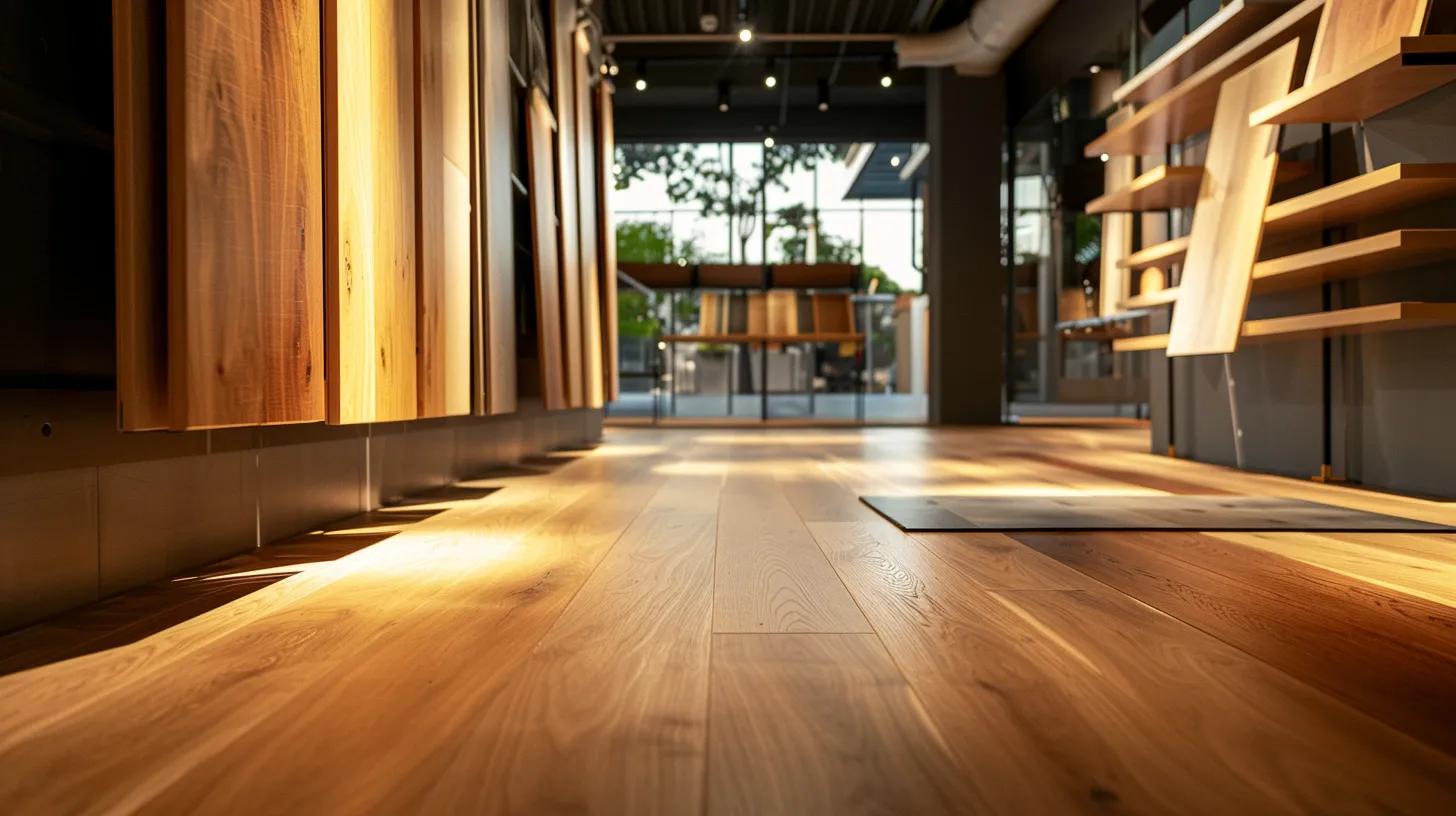
Engineered hardwood floors consist of several layers of wood bonded together under heat and pressure, with a top veneer showcasing the natural grain. In contrast, solid hardwood is cut from a single block of timber, preserving the full grain and texture. Engineered hardwood uses a core of plywood or high-density fiberboard, making it more resistant to changes in humidity and temperature—a key advantage in Dallas.
Solid hardwood offers a rich, authentic appearance and the option to be sanded and refinished multiple times. Homeowners can decide based on subfloor conditions, local climate, budget, and maintenance preferences. Additionally, engineered versions may include advanced adhesives and lamination techniques that boost resistance to moisture and heat, while solid hardwood provides a timeless warmth and natural beauty.
How Is Engineered Hardwood Constructed?
Engineered hardwood is created by bonding multiple wood layers together with a real hardwood veneer on top. The layers, often composed of plywood or high-density fiberboard, are pressed together using heat and advanced adhesives. This multi-ply construction minimizes expansion and contraction from humidity and temperature shifts, reducing warping and damage. The result is a stable, attractive flooring option that retains the look of solid wood.
What Makes Solid Hardwood Different in Construction?
Solid hardwood is milled from a single log, preserving the natural grain, texture, and color variations of the wood. This one-piece construction not only gives a classic appearance but also allows for multiple refinishing sessions over many years. However, in conditions with high humidity or temperature fluctuations, solid wood may expand, contract, or warp if not installed properly. Minor imperfections in the wood add to its charm, though they require careful maintenance, making it ideal for homes where the indoor climate is controlled.
How Do These Flooring Types Suit Dallas Homes?
Both flooring types have their merits in Dallas. Engineered hardwood is especially beneficial in areas with significant temperature and humidity swings, such as homes with concrete subfloors or radiant heating systems. Its layered design helps prevent warping. Solid hardwood, offering unmatched natural beauty, works well in controlled environments where humidity is managed. The room of installation also matters: engineered hardwood is suitable for basements or moisture-prone areas, while solid hardwood is best in living spaces that showcase its classic look.
What Are the Pros and Cons of Engineered Hardwood for Dallas Homes?
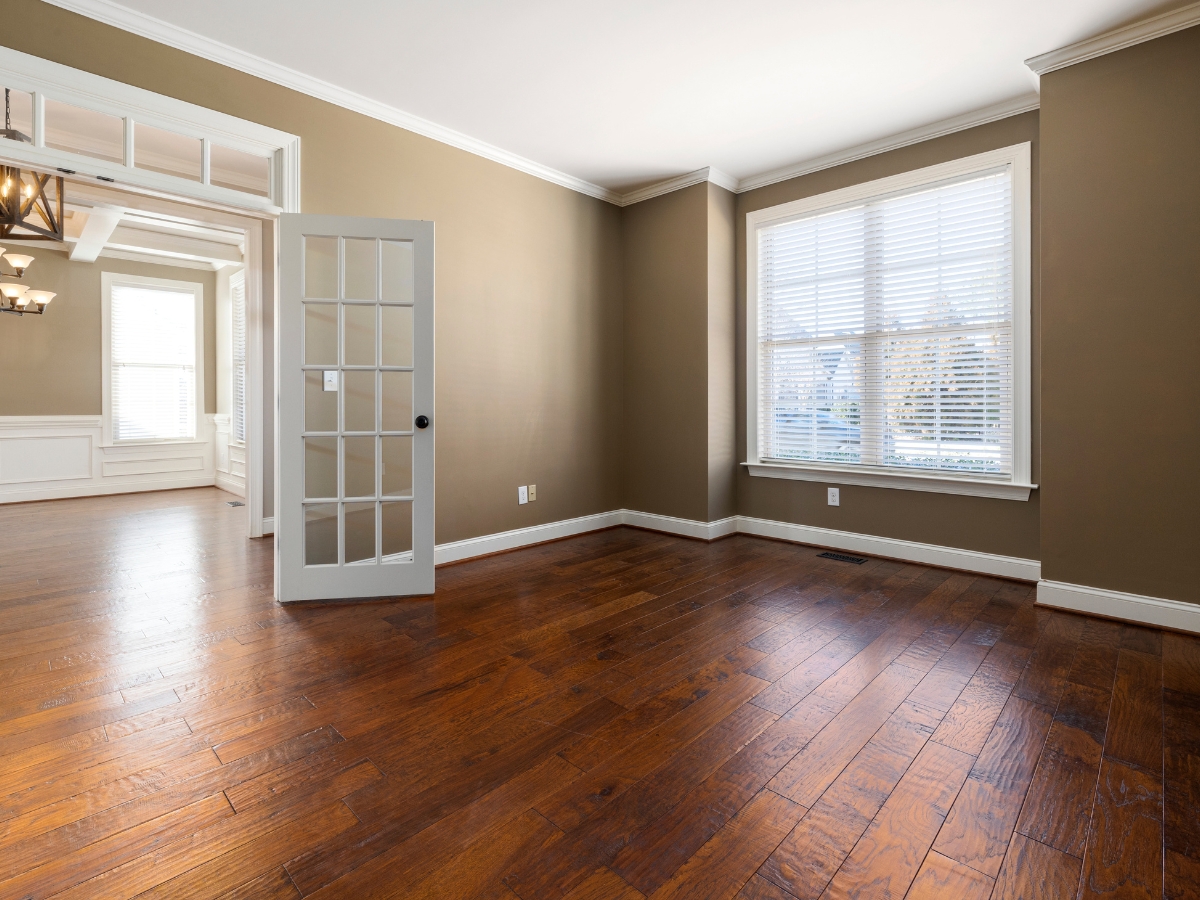
Engineered hardwood combines the natural appeal of wood with improved stability and moisture resistance. However, like any product, it has both advantages and drawbacks important for Dallas homeowners.
What Are the Key Advantages of Engineered Hardwood?
Engineered hardwood pairs a real wood veneer with layered plywood beneath, giving it greater stability than solid wood when temperatures and humidity levels shift. In Dallas, where seasonal swings can stress flooring materials, this multi-layer construction resists warping and cupping. On average, engineered boards cost less than solid planks, making them an economical choice for large rooms or whole-house installations. Because they can float over underlayment or be glued directly to concrete, engineered floors are faster to install than traditional hardwood, reducing labor expenses and disruption. The top layer comes in a wide range of species and finishes—oak, hickory, maple, and more—offering the authentic look of solid wood without the same sensitivity to moisture.
Limitations to Consider Before Installation
Despite its many benefits, engineered hardwood has some drawbacks. The veneer is often thinner than a solid plank’s solid surface, limiting the number of times a floor can be sanded and refinished—typically just once or twice over its lifespan. Although the plywood core repels moisture better than a single-layer board, it is not waterproof; standing water or repeated spills can penetrate and cause swelling or delamination if the veneer or finish is compromised. Lower-grade products use cheaper adhesives under the veneer, which can fail over time and lead to separation between layers. Homeowners seeking a floor that remains virtually maintenance-free for decades should balance these factors against the long-term performance they expect.
Ideal Applications for Engineered Wood in Dallas
Engineered hardwood excels over radiant heating systems and concrete subfloors, where solid wood might shrink or buckle. Its dimensional stability makes it a smart choice for multi-level homes, room additions, and basements that must handle both temperature and moisture variations. High-traffic areas—kitchens, living rooms, and hallways—benefit from durable finishes applied to the veneer, protecting against scratches and scuffs. In new construction or renovation projects with tight timelines, the quick-install methods used for engineered floors help keep deadlines on track. For rooms requiring limited moisture resistance, such as ground-level bathrooms or laundry rooms, choosing a higher-quality engineered product with a water-resistant sealant offers a practical balance of beauty and durability.
Which Dallas Home Environments Benefit Most From Engineered Hardwood?
Modern Dallas homes with radiant heating or concrete subfloors benefit from engineered hardwood’s resilience. Its stable construction suits multi-level homes and high-traffic areas such as kitchens and living rooms. Its affordability makes it popular in new constructions and renovations, as well as in room additions or basements where enhanced moisture resistance is critical.
What Are the Pros and Cons of Solid Hardwood for Dallas Homes?
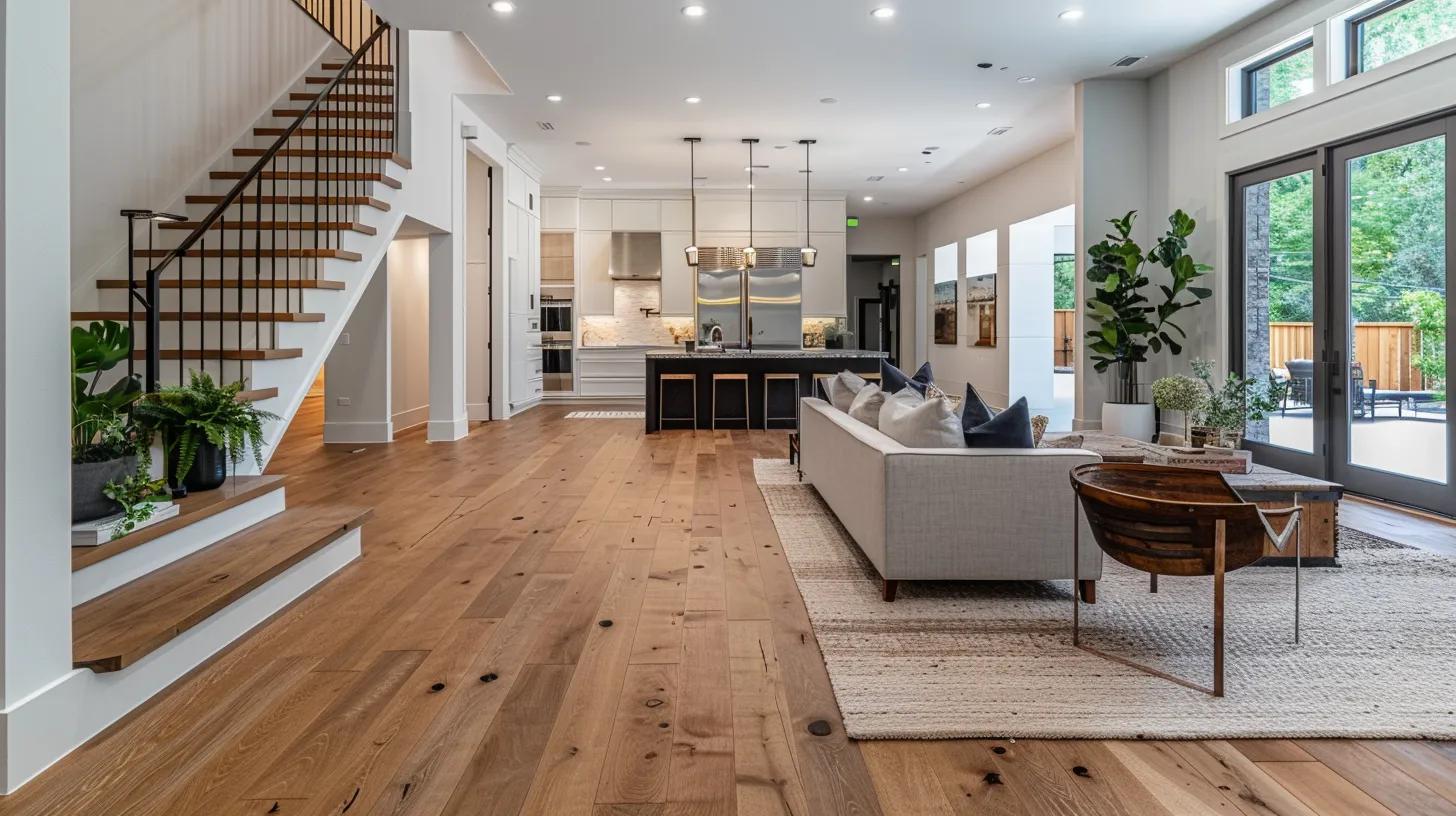
Solid hardwood is admired for its authentic beauty and long-term durability. However, its installation and maintenance require careful consideration, especially in climates like Dallas where humidity can vary.
Advantages of Solid Hardwood in Dallas Homes
Solid hardwood flooring brings an unmistakable depth and warmth to a home, thanks to its single—piece construction and natural wood grain. Each plank reflects the unique characteristics of its species, creating a one-of-a-kind floor that develops character over time. Because solid hardwood can be sanded and refinished multiple times, it easily hides years of wear and tear—keeping a home looking fresh for decades. Its enduring appeal also boosts property values, as many buyers prize the authenticity and prestige of genuine wood floors. When harvested from responsibly managed forests, solid hardwood supports sustainable building practices without sacrificing elegance.
Challenges of Solid Hardwood Flooring
Despite its beauty, solid hardwood demands careful installation and ongoing upkeep. Variations in humidity and temperature can cause boards to expand and contract, risking gaps or warping if the wood is not properly acclimatized before installation. The nail-down method requires a flat, wooden subfloor and skilled labor, making the upfront costs higher than alternatives. Maintaining a solid hardwood floor involves periodic sanding and refinishing, along with prompt attention to spills or scratches to protect the finish. Homes without consistent climate control or those subjected to heavy moisture—like basements or unconditioned garages—may find solid hardwood less forgiving.
Ideal Settings for Solid Hardwood in Dallas
Solid hardwood shines in environments where indoor humidity stays within a stable range—thanks to modern HVAC systems or whole-house dehumidifiers. It is particularly suited to formal living and dining rooms, master bedrooms, and hallways in luxury or custom homes, where its rich appearance and long-term refinishability stand out. Historic renovations also benefit from solid planks that match original materials, preserving architectural authenticity. In these settings, homeowners who appreciate the ability to renew their floors and enjoy the natural aging process will find solid hardwood to be a rewarding investment.
Balancing Style, Cost, and Care
Choosing solid hardwood means weighing its timeless beauty and refinish potential against installation complexity and maintenance needs. For Dallas homeowners committed to climate-controlled interiors and prepared for occasional refinishing, solid hardwood delivers a unique, lasting floor. Its ability to age gracefully and its strong resale appeal make it a premium choice for those seeking both immediate elegance and enduring value.
How Do Installation Costs and Processes Compare for Engineered vs. Solid Hardwood in Dallas?
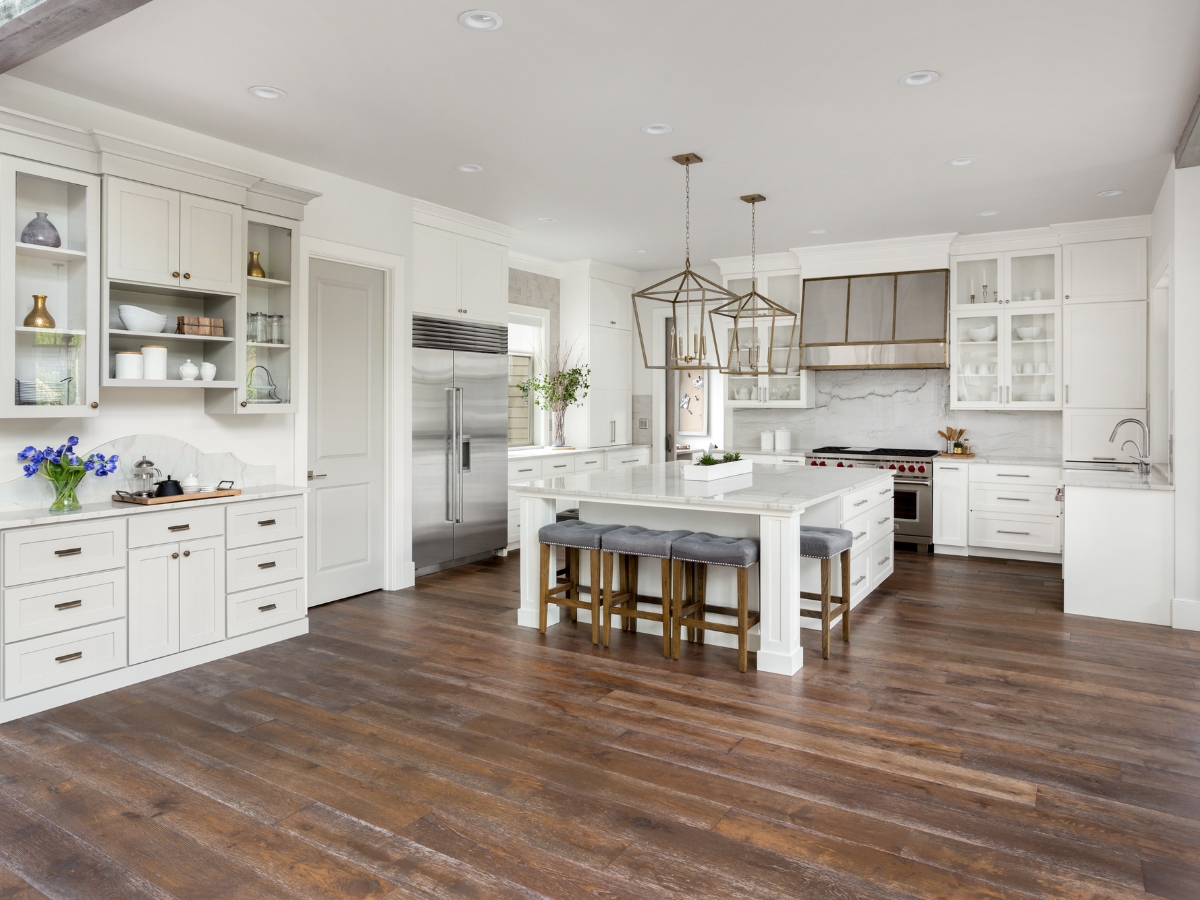
Choosing between engineered and solid hardwood often starts with cost. In Dallas, engineered hardwood usually runs between $6 and $10 per square foot for both materials and labor. Its thinner construction and prefinished surfaces mean installers can float or glue the boards down quickly, cutting installation time and reducing overall expense. Solid hardwood, on the other hand, typically carries a price tag of $8 to $15 per square foot. The material itself costs more, and the required nail-down installation demands skilled labor, precise subfloor preparation, and extra time for finishing, all of which raise the total investment.
What Is the Typical Cost Range for Engineered Hardwood Installation in Dallas?
Engineered hardwood’s layered plywood core makes it more forgiving of subfloor imperfections and moisture fluctuations, which speeds up preparation. Installers often use floating methods that lock boards together over an underlayment, or they glue planks directly to concrete or wood subfloors. Because the veneer arrives factory-finished, there is no need for on-site sanding or sealing. Most engineered floors can be walked on immediately, and a typical room takes one to two days from start to finish. These factors keep labor costs lower and schedules tighter.
How Much Does Solid Hardwood Installation Cost in Dallas?
Solid hardwood demands a more involved process. After allowing planks to acclimate in the home for several days, installers nail boards into a wooden subfloor, maintaining precise spacing to account for seasonal movement. Once laid, the entire floor must be sanded, stained, and sealed on site, adding extra days and equipment. Because each step depends on the last drying properly, a single room can take up to five days to complete. The careful craftsmanship raises labor costs and makes solid hardwood the pricier option, though its multiple refinishing cycles can extend its life span well beyond that of engineered products.
What Are the Installation Methods and Timelines for Each Flooring Type?
Engineered hardwood is often installed using versatile methods such as floating floors or glue-down systems, resulting in a faster, less labor-intensive process. In contrast, solid hardwood requires a more precise nail-down installation, with careful attention to subfloor conditions and climate acclimation, which can extend installation timelines. Both methods benefit from professional expertise to ensure optimal performance and longevity.
How Do Maintenance and Durability Differ Between Engineered and Solid Hardwood?
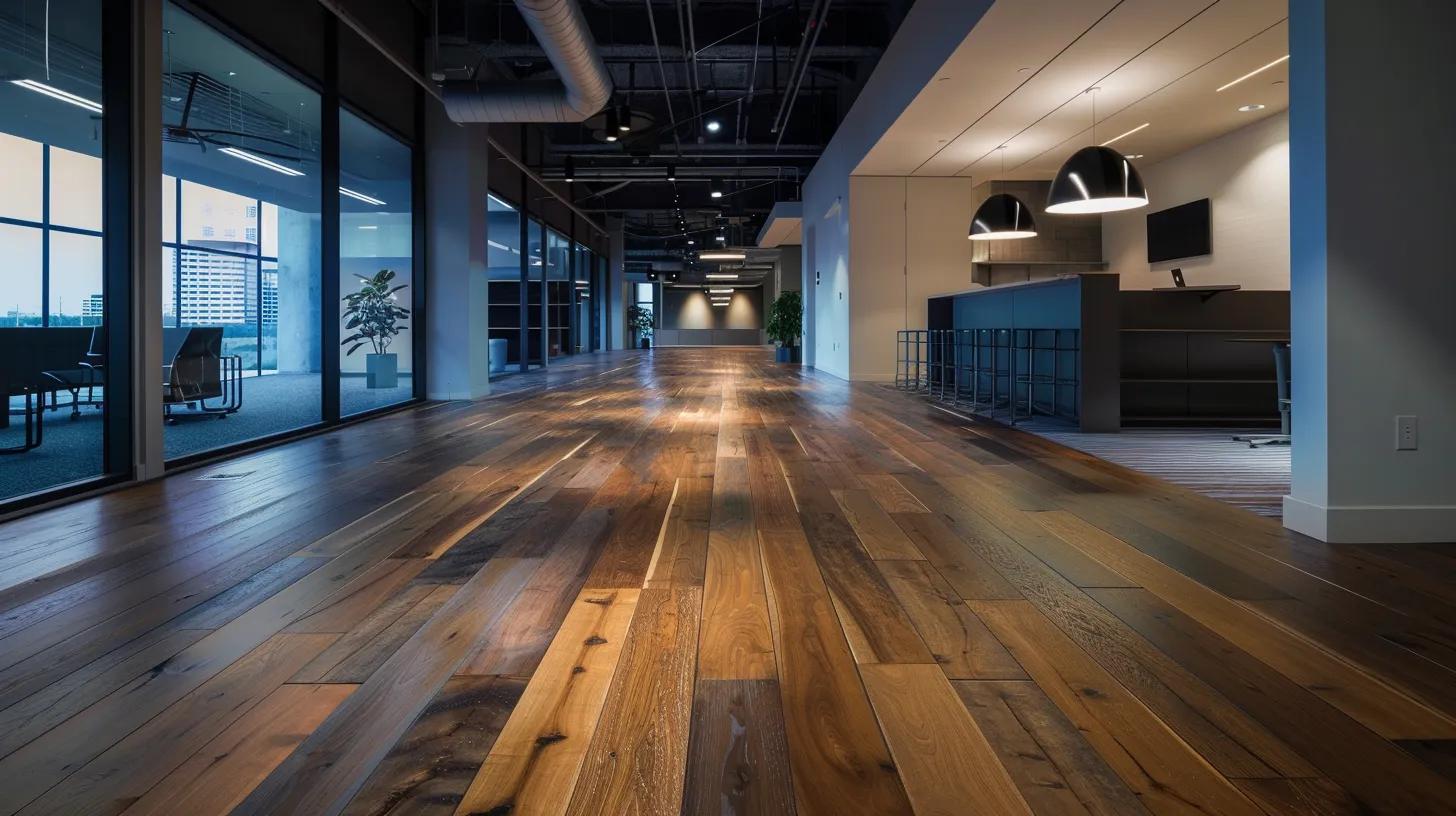
Maintenance and durability are crucial considerations influenced by the flooring’s construction and the local Dallas climate.
Maintenance Needs for Engineered Hardwood
Engineered hardwood is simple to care for. Regular sweeping or vacuuming removes grit that can scratch the surface. Mopping with a damp microfiber cloth and a pH-neutral cleaner keeps floors looking fresh without damaging the finish. Because the wear layer is thin, extensive sanding rarely—and only once or twice—becomes necessary over the life of the floor. Homeowners should promptly wipe up spills to prevent moisture from seeping into seams and use felt pads under furniture to avoid gouges. Overall, engineered hardwood holds up well in busy homes and demands minimal ongoing work.
Caring for Solid Hardwood Over Time
Solid hardwood needs more hands-on maintenance to stay in top condition. Dust and debris must be removed often to prevent surface scratches, and spills require immediate attention to avoid staining or water damage. High-traffic areas will eventually show signs of wear, so homeowners should plan for sanding and refinishing every seven to ten years, depending on use. Maintaining steady indoor humidity with an HVAC system or humidifier helps prevent gaps or cupping. Area rugs in entryways and along hallways can reduce wear, while gentle cleaning methods protect the finish between refinishing cycles.
Comparing Durability in Dallas’ Climate
Dallas experiences wide swings in temperature and humidity, which can cause solid hardwood to expand and contract. Engineered hardwood’s layered plywood core resists these fluctuations better, reducing the risk of warping or separation. While solid planks can be refinished multiple times, the process is labor-intensive and may require moving furniture and arranging for drying time. In contrast, engineered floors maintain their appearance longer with little intervention, making them a practical choice for homes without strict climate control or for basement and addition installs where moisture is more common.
Choosing the Right Floor for Longevity
If you value a floor that bounces back to “like new” through refinishing and you can commit to climate management and periodic sanding, solid hardwood delivers unmatched authenticity and lifespan. If you prefer a lower-maintenance option that stands up to environmental changes and heavy use without frequent refinishing, engineered hardwood provides stability and consistent performance. Both options bring natural warmth and character to Dallas homes; the best choice depends on how much upkeep you’re willing to invest and the conditions in each room.
How Do Engineered and Solid Hardwood Affect Home Value and Aesthetics in Dallas?

The choice of hardwood flooring significantly influences a home’s resale value and overall look. Each option offers unique qualities that enhance both marketability and visual appeal.
Impact on Resale Value
Hardwood floors consistently rank among the features buyers notice first. Solid hardwood often commands a higher premium because it represents a long-term investment: it can be sanded and refinished several times, outlasting other flooring options. Engineered hardwood has narrowed the gap by offering real-wood surfaces with greater stability and faster installation, but some buyers still associate solid planks with traditional quality. In both cases, well-maintained hardwood floors signal a move-in-ready property and can shorten time on market, especially in Dallas neighborhoods known for classic or luxury homes.
Influence of Wood Species on Appearance and Value
Different species bring unique character and durability to a floor. Oak, with its pronounced grain and mid-tone warmth, remains a top seller for its adaptability and scratch resistance. Lighter maple planks make rooms feel more spacious and modern, while hickory’s varied color streaks add visual interest in casual or rustic settings. Walnut’s deep, chocolate hues create a sophisticated backdrop suited to formal living areas. Because buyers often associate certain species with longevity and toughness, choosing a reputable, sustainably harvested option enhances appeal for eco-minded purchasers and can command higher offers.
Style Trends for Dallas Interiors
Current design trends in Dallas blend classic elegance with modern flair. Wide-plank hardwood invokes a sense of space in open-plan living, while hand-scraped or distressed finishes lend a touch of vintage charm. Lighter, gray-washed floors have grown popular for pairing with bright, airy décor, but darker stains still hold strong in formal dining rooms or home offices where warmth and contrast are desired. Transitional homes often feature mixed widths or plank-and-border patterns that echo architectural details, providing a custom look that stands out in competitive markets.
Which Hardwood Flooring Option Is Best for Dallas Homes?
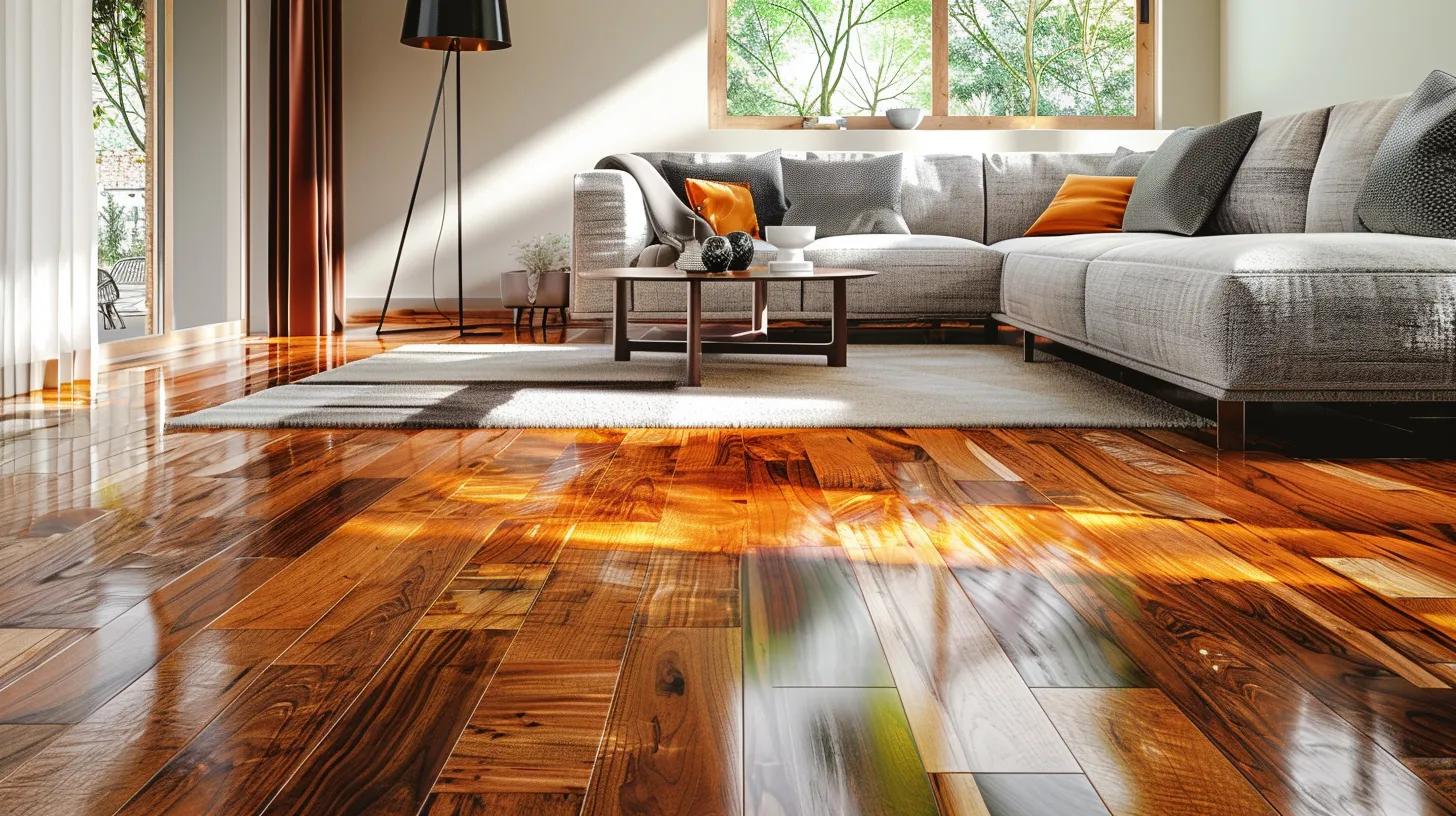
Choosing between engineered and solid hardwood flooring comes down to budget, style, and practicality. Both options add warmth and value to a home, but they suit different needs. Understanding the differences can help Dallas homeowners make the right choice.
What Factors Should Influence Your Flooring Choice?
Climate plays a big role in this decision. Dallas weather can bring humidity and temperature swings, which affect wood floors. Engineered hardwood, with its layered construction, handles moisture and temperature changes better than solid hardwood. This makes it a good fit for basements or rooms with less climate control.
Solid hardwood, on the other hand, offers timeless appeal and can be sanded and refinished multiple times. It works well in stable environments like living rooms or bedrooms. However, it’s more prone to warping in high-moisture areas.
Cost is another factor. Engineered hardwood often has a lower upfront price and easier installation, while solid hardwood may cost more but lasts longer with proper care. Lifestyle matters too—homes with pets or heavy foot traffic might need the durability of engineered wood, while those wanting a classic look may prefer solid hardwood.
Making the Final Decision
Think about where the flooring will go. If you need something moisture-resistant for a basement or kitchen, engineered hardwood is the practical choice. For main living areas where refinishing might be needed down the road, solid hardwood could be worth the investment.
Installation time is another consideration. Engineered planks often click together for faster installation, while solid hardwood requires nailing down and more precise acclimation. Maintenance is similar for both—regular sweeping and occasional mopping with wood-friendly cleaners keep them looking their best.
The best approach is to weigh these factors against your home’s specific needs. Talking to a local flooring expert can provide insights tailored to Dallas homes, ensuring your floors look great and stand the test of time.
Where Can Dallas Homeowners Find Expert Flooring Installation and Advice?
For tailored recommendations and professional installation, Dallas homeowners should consult experienced contractors such as Diaz Hardwood Floors. With decades of local service, these experts can assess unique climate and subfloor conditions, offer competitive pricing and warranty details, and help ensure that the chosen flooring performs optimally while enhancing both durability and aesthetic appeal.
Key Maintenance Tips for Hardwood Flooring in Dallas

Hardwood floors add warmth and elegance to any home, but they need proper care to stay in great shape. Dallas homeowners should follow a few key maintenance steps to protect their investment and keep floors looking beautiful for years.
Daily and Weekly Cleaning
Dust and dirt act like sandpaper, slowly wearing down your floor’s finish over time. Sweep high-traffic areas every few days using a soft-bristle broom or microfiber dust mop. For deeper cleaning, use a hardwood-safe vacuum without a beater bar. Avoid wet mopping, but if needed, use a slightly damp mop with a pH-neutral wood cleaner. Never use vinegar, wax-based products, or steam mops, as these can damage the finish.
Managing Humidity Levels
Dallas weather swings from humid summers to dry winters, which can cause wood to expand and contract. Keep indoor humidity between 35% and 55% to minimize gaps or warping. A simple hygrometer can help monitor levels. In summer, run a dehumidifier if needed. In winter, a humidifier can prevent excessive drying. Placing rugs near exterior doors also helps control moisture from shoes.
Protecting High-Traffic Areas
Furniture pads under chair and table legs prevent scratches when moving items. Area rugs in hallways, entryways, and living spaces reduce wear in spots with heavy foot traffic. If you have pets, keep their nails trimmed to avoid surface scratches. Placing mats near sinks and exterior doors catches water and debris before it reaches the wood.
Handling Spills and Stains
Wipe up spills immediately to prevent water damage or staining. For sticky substances, gently scrape with a plastic tool before cleaning with a damp cloth. Avoid harsh cleaners, which can strip the finish. If a spill leaves a stain, consult a flooring professional before trying DIY fixes.
Long-Term Maintenance
Even with great care, floors eventually show wear. Solid hardwood can be sanded and refinished multiple times, bringing back its original luster. Engineered hardwood has a thinner top layer, so it may only withstand one or two refinishes. If you notice deep scratches, warping, or fading, a professional can assess whether refinishing or board replacement is needed.
Frequently Asked Questions
Q: How does engineered hardwood compare to solid hardwood in terms of environmental impact? A: Engineered hardwood uses less high-quality wood and may incorporate sustainably sourced materials, lowering its ecological footprint. Solid hardwood, when responsibly sourced, offers longevity but requires more timber, potentially increasing its environmental impact.
Q: Can I install engineered hardwood over existing flooring in Dallas homes? A: Yes, engineered hardwood is versatile and can be installed over subfloors like concrete or vinyl as long as the subfloor is level and properly prepared.
Q: What is the expected lifespan of engineered hardwood compared to solid hardwood? A: With proper maintenance, engineered hardwood typically lasts 20 to 30 years, while solid hardwood can exceed 50 years if periodically refinished.
Q: How do moisture control and humidity affect both flooring types in Dallas? A: In Dallas’ climate, engineered hardwood generally performs better due to its layered construction, which minimizes warping. Solid hardwood requires stricter humidity control to prevent expansion and contraction.
Q: Is professional installation necessary for both engineered and solid hardwood? A: Yes, professional installation is recommended to ensure a proper fit and lasting performance, especially in Dallas’ fluctuating climate.
Q: Can solid hardwood be refinished in areas of high wear? A: Absolutely. One of solid hardwood’s benefits is that it can be sanded and refinished multiple times, although this adds to maintenance costs.
Q: How do installation timelines differ between engineered and solid hardwood? A: Engineered hardwood is typically faster to install due to versatile methods and less stringent acclimatization requirements, while solid hardwood demands a more precise, time-consuming nail-down process.
Final Thoughts
Choosing between engineered and solid hardwood flooring ultimately depends on your Dallas home’s specific needs, lifestyle, and budget. While solid hardwood offers timeless appeal, engineered hardwood provides greater versatility for moisture-prone areas. At Diaz Hardwood Floors, we help homeowners navigate these choices with expert guidance and premium hardwood installation services. Call us today at 404-791-0444 or reach out to us and let our flooring specialists transform your space with the perfect hardwood solution.

